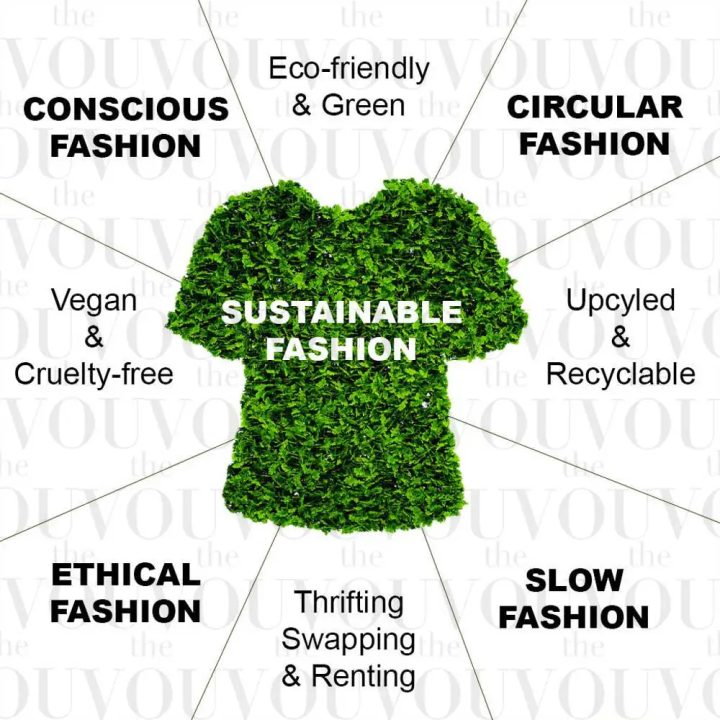Find Cape Town Sustainable Fashion Boutiques and Brands
Find Cape Town Sustainable Fashion Boutiques and Brands
Blog Article
Remain Ahead of the Contour by Checking Out Ingenious Style Trends
In an industry as vibrant as style, remaining in advance involves more than just following existing fads-- it requires an expedition of development. The convergence of technology and style advertises a brand-new period of customer interaction.

Accepting Smart Textiles
In recent times, the apparel industry has actually seen a transformative shift with the combination of clever textiles, a sophisticated development that mixes innovation with fabric. This development stands for not just a combination of appearances and performance but likewise a considerable leap in the direction of sustainability and personalization in style. Smart textiles, likewise understood as e-textiles, embed advanced electronics such as sensors and conductive threads within the fabric, allowing garments to connect with the wearer or the environment.
These fabrics are designed to check physical criteria, such as heart rate or body temperature, offering real-time health and wellness analytics. Beyond wellness applications, wise fabrics are likewise being used for adaptive clothes, which can change color or pattern in reaction to environmental stimuli, thus using a dynamic fashion experience.
Moreover, the development of energy-harvesting fabrics that produce power from motion or sunlight is leading the way for self-dependent wearable innovation. This advancement is attracting ecologically conscious consumers and designers intending to lower the environmental impact of style. As study and growth in this field advance, clever textiles are anticipated to end up being progressively prevalent, improving the landscape of modern-day style with their multifunctional abilities.
The Surge of 3D Printing
Reinventing the production landscape, 3D printing has become a game-changer in the fashion business. This innovative innovation has allowed designers to press the boundaries of imagination, producing detailed and personalized garments that were previously inconceivable. By leveraging electronic style and additive manufacturing, 3D printing assists in the creation of complicated geometries and patterns, enabling developers to experiment with brand-new appearances and structures.
A remarkable advantage of 3D printing in vogue is its capacity to produce on-demand, lessening waste and minimizing stock needs. This effectiveness not just enhances manufacturing processes yet additionally enables quick prototyping, making it possible for developers to bring their visions to life in a shorter timeframe. In addition, 3D printing sustains customization somewhat unmatched by conventional techniques, supplying personalized fits and unique styles customized to specific customer preferences.
The increase of 3D printing has actually likewise equalized style, making it easily accessible to arising developers that can currently make high-quality items without substantial economic investment in typical manufacturing infrastructure. As technology remains to advancement, the fashion business is positioned to harness the full possibility of 3D printing, discovering brand-new products and strategies that will unquestionably redefine exactly how fashion is developed and generated.
Sustainable Fashion Innovations
As the fashion industry grapples with the pushing requirement for environmental responsibility, lasting fashion developments have arised at the leading edge of transformative change. The expanding understanding of eco-friendly influence has sustained a shift in the direction of even more eco-conscious practices and products. Brand names and designers are currently prioritizing sustainability, integrating techniques that decrease waste and minimize carbon footprints.
One considerable development is the increase of round fashion, which highlights recycling and upcycling to extend the lifecycle of garments. This approach not just decreases waste however also motivates consumers to take on a much more conscious approach to clothes usage.
An additional advancement hinges on the adoption of innovative dyeing methods that utilize natural dyes or waterless processes, therefore reducing the huge quantities of water and chemicals commonly used in fabric dyeing. Moreover, innovations in biotechnology have actually resulted in the creation of lab-grown natural leather and materials, offering cruelty-free and eco-friendly choices to standard materials. Via these introducing efforts, the apparel industry is making meaningful strides towards a more sustainable future.

Tech-Integrated Clothing
Tech-integrated apparel represents a groundbreaking fusion of style and modern technology, reshaping exactly how people communicate with their clothing. This ingenious domain name is marked by the addition of clever fabrics and embedded digital components, improving both capability and visual appeal. From health and fitness trackers embedded in sports apparel to warmed jackets controlled by means of smart device apps, tech-integrated apparel uses customers extraordinary benefit and versatility.
Introducing brand names are driving this pattern, concentrating on producing garments that react useful reference to environmental stimulations or user commands. For example, some garments can change color or pattern in reaction to temperature changes, while others incorporate biometric sensors to monitor health and wellness metrics like heart rate or anxiety degrees. The smooth integration of innovation right into fabrics likewise includes environmental sustainability, with efforts to establish self-cleaning textiles or garments that get used to weather conditions, hence reducing the requirement for numerous layers.
Additionally, the advent of wearable innovation is not just restricted to clothes however expands to accessories like watches and eyewear, additional expanding the range of tech-integrated fashion. As the industry continues to innovate, the capacity for customization and personalization in apparel grows, providing customers unique, tech-enhanced fashion experiences that accommodate their individual requirements and preferences.
Future of Virtual Fashion
In recent years, the future of virtual fashion has become a transformative pressure within the sector, leveraging innovations in electronic innovation to redefine how fashion is developed, experienced, and consumed. By incorporating enhanced truth (AR), online reality (VIRTUAL REALITY), and 3D layout devices, designers can currently craft interactive and immersive experiences that go beyond standard fashion borders. Digital style enables the production of garments that exist only in electronic atmospheres, using unlimited possibilities for development without the limitations of physical production.
This digital change not just provides chances for creative expression yet also addresses sustainability worries fundamental in traditional style techniques. Cape Town Sustainable Fashion. By removing the requirement for physical resources, virtual fashion reduces waste and decreases carbon impacts. In addition, the rise of digital fashion lines up with the raising consumer need for tailored and unique experiences, as virtual garments can be personalized and customized to individual choices with simplicity

Conclusion
The fashion market's future hinge on the integration of innovative innovations and lasting practices - Cape Town Sustainable Fashion. Smart fabrics and tech-integrated apparel are enhancing capability, while 3D printing offers possibilities for personalization and waste reduction. Lasting fashion, through round strategies and environmentally friendly products, demonstrates a dedication to environmental stewardship. Moreover, digital fashion is positioned to redefine consumer interactions. Adapting to these fads is necessary for brands seeking to remain affordable and relevant in this quickly evolving landscape.
In current years, the style industry has observed a transformative change with the assimilation of smart textiles, a sophisticated advancement that mixes technology with fabric.As the fashion sector grapples with the pressing requirement for ecological duty, lasting fashion technologies have actually arised at the center of transformative adjustment.In current years, the future of digital style has emerged as a transformative pressure within the industry, leveraging developments in Recommended Reading electronic innovation to redefine exactly how style is created, experienced, and eaten. The rise of virtual style aligns with the increasing consumer need for one-of-a-kind and personalized experiences, as virtual garments can be customized and customized to private preferences with ease.
The style find more industry's future lies in the combination of lasting techniques and ingenious innovations.
Report this page